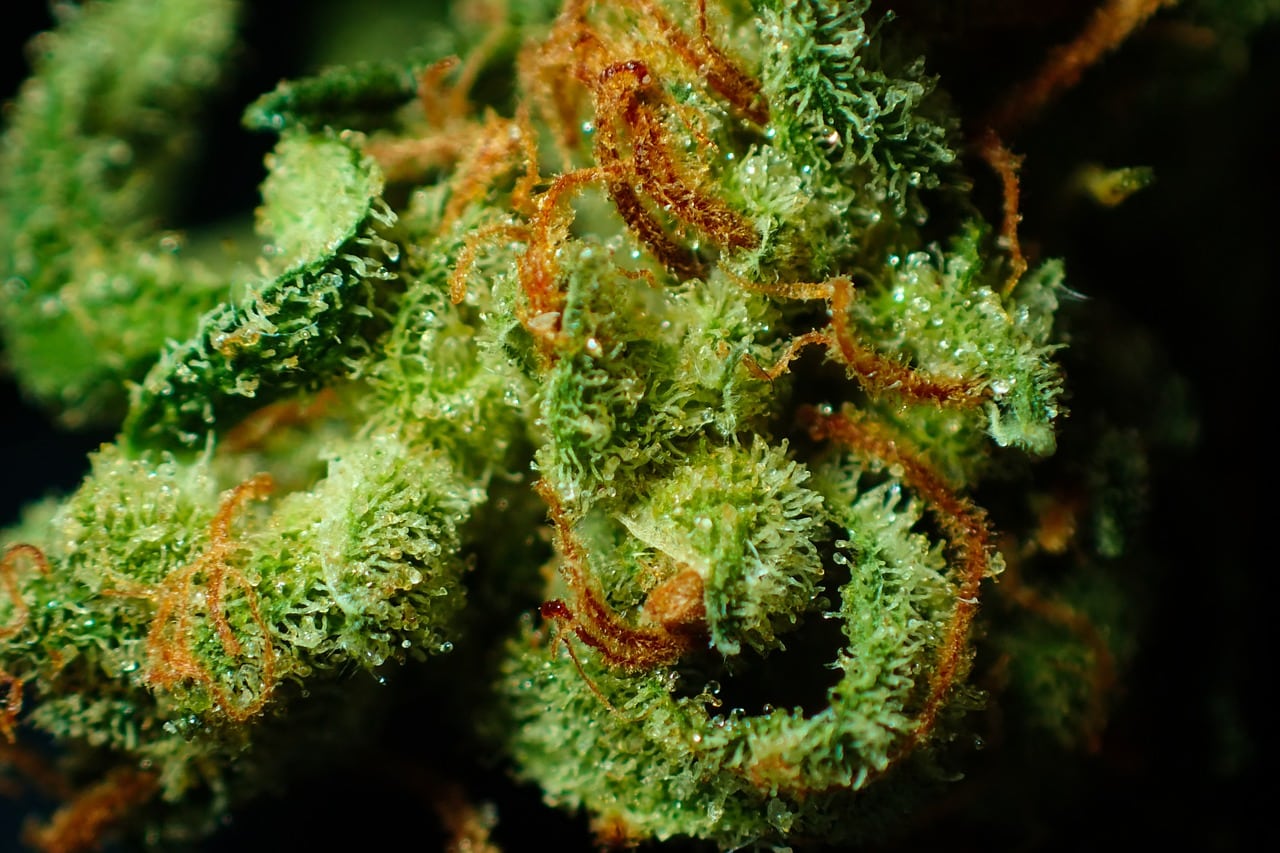If you’ve ever walked past someone’s freshly rolled marijuana cigarette and caught a whiff of what seemed to be peppermint, diesel, or maybe lavender oil – you’re not alone. You might have been smelling these cannabis terpenes.
One thing you should know about cannabis is how terpenes and weed go hand in hand. Without cannabis terpenes, there is no weed – these aromatic compounds play a crucial role in your cannabis experience. For example, if you smoke two different buds with the same THC concentration, the high will likely be different. This difference is most likely due to the cannabis terpenes present in each plant.
Cannabis terpenes sound complicated, but they really aren’t! By understanding their structure and functionality, you’ll be able to refine your cannabis experience. In this article, we address the fundamental questions surrounding this topic – read on to find out why these compounds matter and how they can help you find the perfect strain.
What are cannabis terpenes?
Weed’s distinctive odor is hard to miss. In most cases you’ll smell it before you see it, thanks to the pungent or fruity scent of the herb. For those that don’t like weed, the piney aromas triggered by terpenes might be more welcome – summer time favorites like mangoes are just a few examples.
Terpenes are aromatic compounds responsible for the various flavors, colors, and scents of different plants. All plants naturally produce terpenes because they are essential to survival. Cannabis Terpenes are found in all plants – there are over 20,000 variations.
In the context of cannabis, terpenes serve the same role. For example, your strain Lemon Haze will likely have a lemony, citrusy scent due to limonene. In contrast, your 10th Planet R1 might have an earthy, fruity smell thanks to myrcene.
The white, sticky, hair-like formations on the buds and leaves of cannabis plants are called trichomes. Cannabis Terpenes are the resin glands that give marijuana its signature golden sheen.
Its purpose in nature
Terpenes can be considered secondary compounds produced by plants to help them grow, reproduce, and survive. In other words, cannabis terpenes can:
- Attract pollinators by making it easy for them to find the plant
- The key to repelling harmful predators includes attacking their reproductive system, toxicity or attraction to other helpful insects and animals that feed on them
- Cannabis plants produce terpenes that have antimicrobial properties which help them fight off disease. This gives the plant an advantage in survival, making the plant stronger and more resilient to environmental stressors.
- Certain terpenes can act as sunblock, shielding your plants from harsh UV rays in the case of excess sunlight
Scientists have identified over 150 cannabis terpenes so far, though a vast majority of them are in trace amounts. Still, some of the more important ones like limonene are noted prominently, as they have specialized research considerations.
What are Cannabis Terpenes, and how do they interact with the body?
Overall, terpenes serve as important chemical markers in the world of weed. It’s becoming increasingly important, because terpenes may also impact your body and benefit you in other ways. For example, some scientific research suggests that cannabis terpenes are useful for medicine.
For instance, limonene has been found to have both antioxidant and anti-inflammatory properties, making it a valuable remedy for many different health conditions. Similarly, myrcene is another terpene that is well-known for its tranquilizing, analgesic, and antioxidant properties. It may also be effective against inflammation and pain.
We often don’t feel like we’re productive because of how myrcene affects our minds. Myrcene is also critical to aromatherapy, comprising a significant portion of essential oils.
What happens when you consume cannabis terpenes:
The correlation between terpenes and cannabinoids can be better explained through the entourage effect, a phenomenon where the whole is greater than the sum of its parts.
Make sure you keep in mind these few things before continuing:
- Terpenes alone will not get you high. But they can have some effects on your body, as shown above.
- Terpenes and cannabinoids are not the same. They come from different compounds, and terpenes do not bind directly with receptors in the endocannabinoid system.
So, how do terpenes work, then?
Cannabis compound synergists work by amplifying the effect of cannabis compounds like cannabinoids and terpenes. Taken on their own, each of these components is still effective, but not nearly as effective as they are when combined.
Research shows that the entourage effect – terpenes interacting with cannabinoids – is helpful in treating mood and anxiety disorders. For example, a study from 2010 demonstrated that when THC and CBD are used together, they are more effective than using just THC for pain relief.
Known for boosting mood, limonene is also a powerful antioxidant that can increase your serotonin levels. This means it would work well with both THC and CBD. It seems like such a common sense relationship: terpenes help create your desired experience.
Terpenes are what drive the car. They tell your engine how to operate and guide you on your journey. Depending on the terpene profile of your bud, you will have a different experience. Cannabinoids are like your car’s engine; they power up the whole ride and give you a boost.
Common Cannabis Terpenes
Myrcene
The Mother of all cannabis terpenes, myrcene is the most common terpene found in cannabis plants. It has an earthy, herbal scent, known for its sedative and sleep-aid effects. It is also found in mangoes, thus giving rise to the notion that eating a mango before consuming cannabis can increase your high.
Limonene
Limonene is highly aromatic and pungent, giving a strong citrusy aroma. It has stress-relief and anti-depressant properties and is associated with energising and uplifting your mood.
Pinene
Another well-known terpene, pinene has an aromatic profile similar to pine cones or pine forests. It is known for its mood-elevating effects and can help improve focus, alertness, and even memory loss associated with THC.
B-Caryophyllene
Also known as beta-caryophyllene, it has a characteristic pungent, spicy, peppery scent. In addition to cannabis, it is found in black pepper, cloves, and cinnamon. Studies have shown caryophyllene has antioxidant, anti-inflammatory, and anti-depressant properties.
Linalool
Linalool is an abundant terpene with an unmistakable smell of lavender, thus giving a floral scent. It is a well-known sedative that can help reduce anxiety and depression, alongside providing other health benefits.
Final Thoughts
There is still a lot of our understanding of cannabis terpenes that’s incomplete. Research is growing, especially as it pertains to how they interact with the human body. One thing is clear – terpenes have a huge potential to give your cannabis experience that extra edge. Marijuana growers should include these compounds in their recipe, and marijuana store owners should be upfront about the terpene profile for each strain on sale.
When you purchase cannabis, it’s important to consider how changing the terpene profile will change the high that you experience. For example, a myrcene-rich strain can help you relax after a long day of work, while limonene-rich flowers can give you the mental clarity for anything you need to do. Consider looking at test results and labels to understand which cannabis terpenes will work for you best.
This, too, takes time and practice, but as you smell more strains and get to know their terpenes better, your nose will get better at pointing out the leading terpene in the strain. You’ll eventually be able to tell when a strain is good for you and when it’s not.









